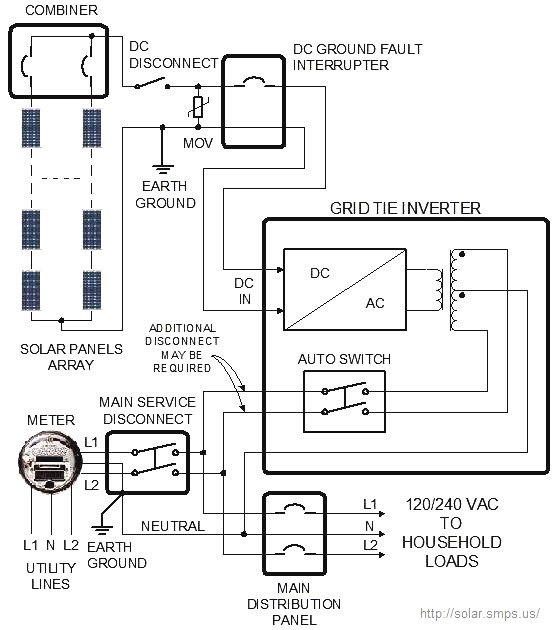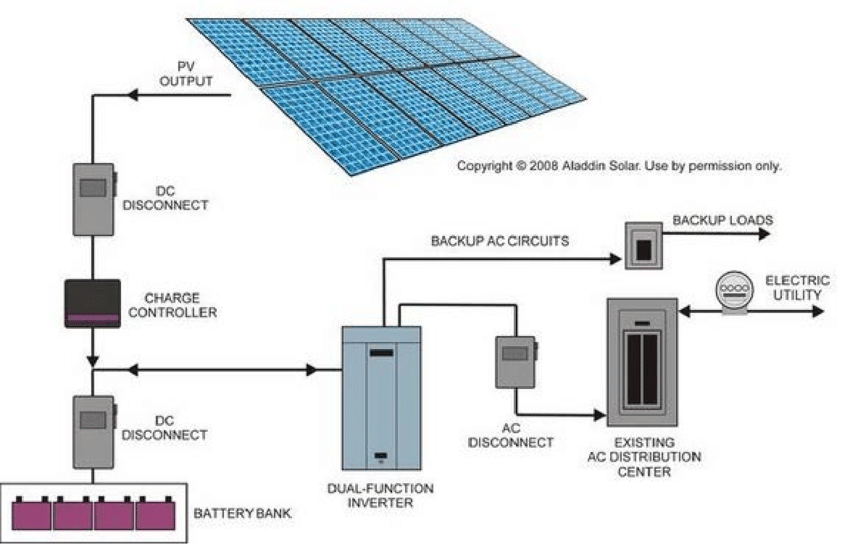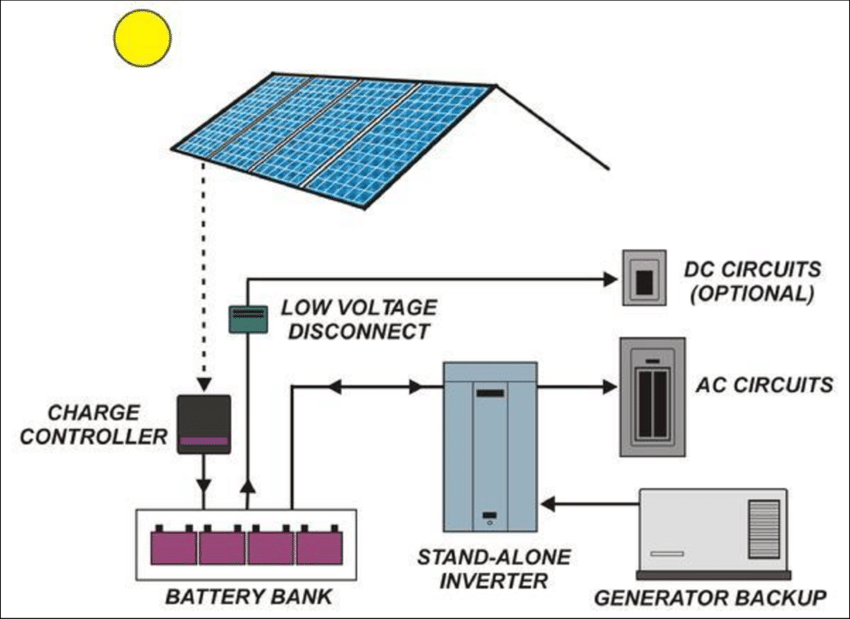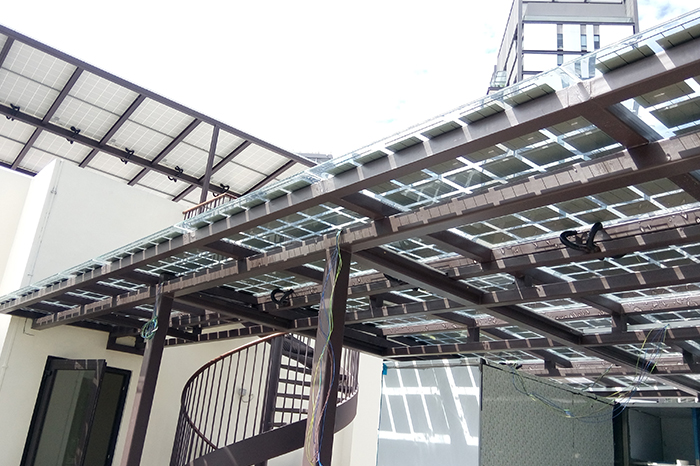The three most common types of photovoltaic systems for residential solar power are:
- Grid-Tied PV System
- Grid-Tied PV System with Battery Backup
- Stand-Alone PV System
Grid Tied PV System

Grid Tied PV System Diagram
A grid-tied PV system allows you to use the electricity generated by your PV system as well as electricity from the grid. When your PV system is producing electricity, your home will be powered by solar electricity. During the times when your PV system isn’t producing electricity, such as at night, your home will receive power from the grid.
Any excess electricity produced by your system can be fed back to the grid. This is known as net-metering. With net-metering, when you use electricity from the grid your meter spins forward and when you are providing electricity to the grid your meter spins backwards. This offset means you are actually receiving market rates for the electricity you provide to the grid!
For most people, a grid-tied PV system is the ideal configuration.
You get all the benefits of using your own solar electricity as well as the benefits of being connected to the grid. It is also less expensive than other types of PV systems.
Grid Tied PV System With Battery Backup

Grid Tied PV System With Battery Backup Diagram
A grid-tied PV system can also be supplemented with a battery backup.
Grid-tied PV system inverters are designed to shut down when the grid experiences a power outage in order to protect the utility repair workers from being shocked by electricity coming from your PV array. This is called islanding. If your PV system includes a battery bank, during a power outage you can utilize the energy that your PV system produced and stored in the batteries.
A grid-tied PV system with battery backup is also ideal if you live in an area that has unreliable power from the grid or that experiences power outages due to natural disasters.
Stand Alone PV System

Off-grid Solar PV System Diagram
Off-grid Solar Systems, often referred to as Stand-alone power systems (SAPS) – work by generating electricity from solar panels and using it to charge a solar battery via a charger controller.
That electricity is then converted using an inverter so that it can power your home or business appliances
–
Here at SunPro Energies, we are committed to providing solar solutions for your residential, commercial and industrial needs. Contact us to enquire more and arrange for a free site visit!



